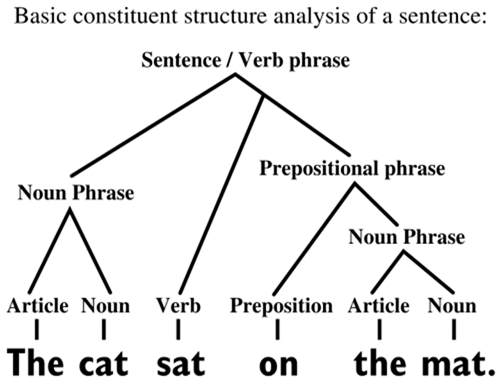
PRINCIPLES OF SENTENCE FORMATION .
Rajabova Kamilla Zavkiddinovna:
a sophomore of Uzbek State World
Languages university. UzSWLU.
Academic adviser: a dean of the faculty
of translation as well as : Omonov.P.X.
Annotation: principles of sentence formation are scrutinized in this scientific paper and their connection with the whole grammatical organization is illustrated.
Key words: a sentence , five basic patterns , simple sentence , compound sentence, FANBOYS , complex sentence , assertive or declarative sentences , interrogative sentence , imperative sentence , exclamatory sentence.
A sentence is a meaningful collection of words. However, with the rules of grammar in mind, we can say that a sentence is a group of words that has a subject, a verb, and an object. In English, this is known as the SVO structure or the SUbject-Verb-Object structure. The subject comes first, then comes the verb and, following which comes the object. Let us first see the different types of the sentences. In the space below we will discuss definitions and examples of the various types of sentences. Let us begin with what is known as the simple sentence.
There are five basic patterns around which most English sentences are built.
1 .S-V
Subject-Verb
John sleeps.
Jill is eating.
Jack will arrive next week.
2.S-V-O
Subject-Verb-Object
I like rice.
She loves her job.
He’s eating an orange.
3.S-V-Adj
Subject-Verb-Adjective
He is funny.
The workers are lazy.
Karen seems angry.
4.S-V-Adv
Subject-Verb-Adverb
Jim is here.
Flowers are everywhere.
No one was there.
5.S-V-N
Subject-Verb-Noun
She is my mom.
The men are doctors.
Mr. Jones is the teacher.

Simple Sentence .
A sentence is a simple sentence if it contains only an independent sentence. This type of sentence doesn’t contain any dependent clause. Compound Sentence .
These sentences are of two clauses. Each of them is an independent clause, so we can say that every combination of two independent clauses will form a compound sentence. The two clauses will be connected with what we call the “FANBOYS” conjunctions. The FANBOYS conjunctions are the following:
F for
A and
N nor
B but
O or
Y yet
S so
Complex Sentence
The third type of sentences are the complex sentences. The complex sentences have one or more than one dependent clauses. They may also contain an independent clause but must have at least one dependent clause. The dependent clauses can be identified with the help of conjunctions that are known as the subordinating conjunctions. Following are some of the examples of subordinating clauses: if, when, as, before, until, after, since, while, though, before, even, though, unless etc. are all subordinating clauses that if put in front of a clause ma
Other Sentence Types
There are other sentence types that are based on the mood or the tempo of the speaker or the writer. king it a dependable clause.
Assertive or Declarative Sentences: These are the sentences that state facts, or declare statements. For example, India is a secular country. The sun rises in the East etc.
Interrogative Sentences: The sentences that ask questions or inquire about something are interrogative sentences. For example, Is she serious? Are you going to the party?
Imperative Sentence: These sentences convey orders, pieces of advice, orders, requests etc. For example, Shut the door.
Exclamatory Sentences: They express the strongest emotions of fear, excitement, happiness, sorrow, shock etc. The exclamatory sentences often end in an exclamatory mark ‘!’. For example, Alas! I forgot my phone.
Conclusion: A sentence is a group of words that are put together to mean something. A sentence is the basic unit of language which expresses a complete thought.It does this by following the grammatical basic rules of syntax. Each person estimates the object arbitrarily . That is why the realization of the inventorial level becomes possible due to the individual usage of forms within the sphere of grammatical synonymy . The latter being an objective phenomenon is individual in its concrete usage by every member of the same linguistic community of people .
The list of used literature:
Chomsky, N. (1956). Three models for the description of language. IRE Transactions on Information Theory, vol. IT-2. (Reprinted in Luce, R. D., Bush, R. R. & Galanter, E., eds., Readings in Mathematical Psychology, vol. 2, pp. 105–124. New York: Wiley, 1956.)
Chomsky, N. (1957). Syntactic Structures. The Hague: Mouton.
Chomsky, N. (1961). On the notion ‘rule of grammar’. Proceedings of the Twelfth Symposium in Applied Mathematics 6–24 (edited by Jakobson, Roman). Providence, Rhode Island: American Mathematical Society. (Reprinted in J. A. Fodor & J. J. Katz, eds., The Structure of Language, Englewood Cliffs, N.J.: Prentice-Hall, 1964.)
Chomsky, N. (1965). Aspects of the Theory of Syntax. Cambridge, Mass.: M.I.T. Press.
Katz, J. J. & Postal, P. M. (1964). An Integrated Theory of Linguistic Descriptions. (Research Monographs, 26.) Cambridge, Mass.: M.I.T. Press.
Lakoff, G. (1965). On the Nature of Syntactic Irregularity. (Report No. NSF-16, Mathematical Linguistics and Automatic Translation.) Cambridge, Mass.: Harvard Computational Laboratory.
Lees, R. B. & Klima, E. S. (1963). Rules for English pronominalization. Lg. 39. 17–28.
Rosenbaum, P. S. (1965). The Grammar of English Predicate Complement Constructions. (M.I.T. Ph.D. dissertation.)
Rosenbaum, P. S. (1966). A principle governing deletion in English sentential complementation. IBM Research Report RC 1519. Yorktown Heights,
Материалы на данной страницы взяты из открытых источников либо размещены пользователем в соответствии с договором-офертой сайта. Вы можете сообщить о нарушении.